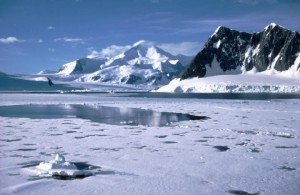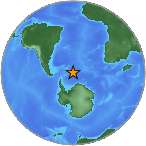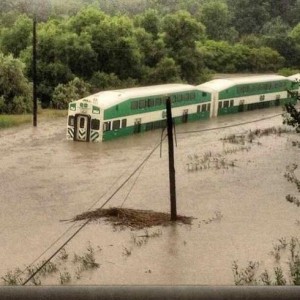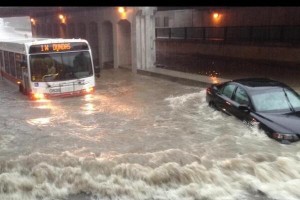
Glacial ice melting is increasing around the world, contributing to rising sea levels. (Photo : British Antarctic Survey)
Just days after a massive ice sheet melts and breaks off Antarctica, a 7.3 earthquake rattles the South Polar region.
Coincidence? I don’t think so.
Pine Island Glacier
On July 8, 2013, a 450 square mile chunk of the Pine Island glacier (eight times the size of Manhattan) broke off the glacier and floated into the sea.
One of the fastest moving glaciers on our planet, the 68,000 square mile Pine Island glacier is losing more ice today than any other glacier on Earth.
Ice Melting
Ice sheets cover vast amounts of land and water in Antarctica and Greenland, and when combined, contain about 99.5 percent of the Earth’s glacial ice. If both of these ice sheets completely melted, global sea levels would rise about 200 feet – an event that would be disastrous for the concentrated populations living within coastal cities worldwide, but an event that HAS happened in the Earth’s geologic past.
Research shows that today, glaciers are losing substantial amounts of ice, around 300 billion tons every year, and the rate of glacier ice melting is increasing. Scientists with NASA’s Operation IceBridge first discovered a giant crack in the Pine Island Glacier in October 2011.
Pole Shifts
Today, the Earth is becoming unstable due to many influences affecting its rotation and balance, such as the widening of precession, erratic rotation, global warming, large melting ice sheets, rising sea levels, and excessive weight of the continents at the North Pole. These forces eventually trump any tectonic movement, and our planet’s axis shifts.
Melting ice sheets fill the oceans with water, and water is a heavy, dynamic force that increases polar instability. This is no coincidence.
Heed The Warning

7.3 magnitude earthquake at the South Polar region shakes the South Pole days after a massive chunk of ice breaks off Antarctica – USGS
Combined with the effects of increasing solar output and volcanic out-gassing, melting ice sheets are filling the oceans, contributing now, as in the past, to a weight imbalance at the poles.
Most certainly, human technology and its pollution, urban sprawl, and deforestation are hastening polar instability. Changes are happening so fast, we will not be able to keep our present lifestyles if we do not start acknowledging these changes NOW.
A 7.3 magnitude earthquake occurring at the South Pole merely days after a massive ice sheet breaks off the Pine Island glacier is no coincidence. This is a sign of a pole shift.


